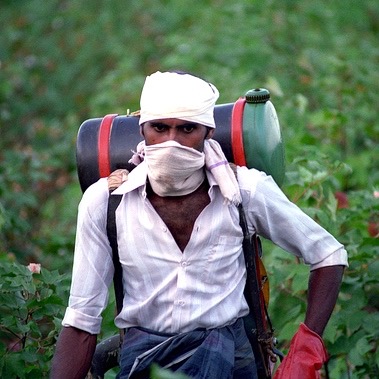May 8, 2015 — Is it possible to reduce pesticide use without compromising crop yields? Yes — and then some, according to a new study published in the journal Insects.
Researchers at the University of Essex in the United Kingdom measured pesticide use and crop yield at 85 project sites in 24 Asian and African countries practicing integrated pest management — an agronomic approach that taps nature’s strategies, such as competition, diversification and predation, to reduce the toll of insects, weeds and other yield-reducing pests on crops, supplementing with conventional pesticides as needed. They found that crop yield on the study sites increased an average of 41 percent while pesticide use dropped more than two-thirds after IPM was adopted. Crops involved in the study included rice, maize, wheat, sorghum, soybean and potato.
“Through these farming strategies crop yields can be increased while reducing pesticide application and costs,” the researchers wrote in a related article at The Conversation. “Farmers get more, and the environment wins, too.”
The researchers noted that even though we use 7.7 billion pounds (3.5 billion kg) of pesticides worldwide each year, pests still destroy enough food to feed 1 billion people. IPM, they suggest, can play a key role in sustainable intensification of agriculture — efforts to increase productivity while reducing negative environmental impacts and supporting ecosystem services — as we work to feed an increasing (and increasingly affluent) global population. Reviewing four kinds of IPM projects, the researchers estimated that adoption of IPM has the potential cut pesticide use in half in Asia and Africa.
The researchers also underscored the importance of the human dimension in advancing the adoption of IPM, since it involves making customized, strategic decisions about the proper mix of a number of strategies, each with its own costs and benefits. They noted the importance of educational systems such as farmer field schools if initiatives to advance IPM are to succeed.
![]()
Photo by IFPRI -IMAGES (Flickr | Creative Commons)
Ensia shares solutions-focused stories free of charge through our online magazine and partner media. That means audiences around the world have ready access to stories that can — and do — help them shape a better future. If you value our work, please show your support today.
Yes, I'll support Ensia!
